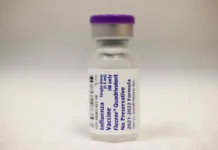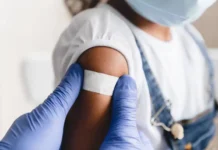Opinion by Kent Sepkowitz
Editor’s note: Kent Sepkowitz is a CNN medical analyst and a physician and infection control expert at Memorial Sloan Kettering Cancer Center in New York. The views expressed in this commentary are his own.

(CNN) — As more and more vaccinations are administered in the US, the Covid-19 story, which once was nothing more than a tale of enormous tragedy, now has a new plotline: how best to return to normal. A key element of this latter story arc is the poorly understood concept of “herd immunity.”
The idea is straightforward: transmission of a virus depends on a non-immune person bumping into an actively infected person. With more and more vaccination, the likelihood that a non-immune person will come in contact with an infected person is progressively reduced until — poof — the risk of catching the infection is almost gone (though never zero).
Unfortunately, the simplest ideas are almost never so simple. Consider a calculation to determine the threshold for herd immunity: Vc=(1− 1/R0)/E. “Vc” is the proportion of people who must be vaccinated to protect the rest of the herd, “R0,” pronounced R-naught, is an estimate of the number of secondary cases from the original infected person and “E” represents effectiveness of a given vaccine against transmission. And this, which resembles a brutal SAT math section entry, is the dumbed-down version.
The original concept came from veterinarians with an actual herd to protect. The issue in 1918, when the first article describing herd immunity was published, was the threat of epidemic miscarriage due to a bacterium among pregnant cows in Kansas.
The authors made the observation that cows who survived one miscarriage were at greatly reduced risk for a second miscarriage due to their previous infection. Lessening the threat of fetal loss therefore was straightforward: farmers should “retain” immune cattle — those who had already had a spontaneous abortion — and not waste “material, time, and energy … on animals of doubtful value.” Rather, they advised to butcher the non-immune cows and concentrate on the immune, “profitable” ones.
In other words, susceptible cows should be culled to lessen the risk of new infections. If the entire herd is immune, then livestock-threatening disease is prevented. Though, of course, the fix — culling — is not an option for human disease, the benefit of an immune herd is self evident.
Fast forward to the 21st century world of vaccines. Pandemics and health care are decidedly more complex, which has led all to wonder: what is the magic number of people we need to vaccinate so we can all forget these disastrous last 14 months?
Here’s the problem: there is no answer. This is not a fund-raiser with a fixed universal goal we all are striving to reach. The above equation evaluates the nation as a homogenized entity, but people live in communities. And things vary community to community. For example, in one locality, people may move around a lot — by car or bus or by walking. Each has an impact on risk of transmission (and therefore the number of immune people needed to protect the rest of the “herd”). In another community, the mobility may be lower.
Plus, cultural differences may influence how close people stand when they talk. A famous mumps outbreak in adolescent boys from the Orthodox Jewish community is thought to have been exacerbated by the school practice of promoting close, sustained (15 hours a day) contact with a study partner (“chavrusa”) including “animated” face-to-face discussion resulting in transmission despite the fact that most had been vaccinated years before.
And what about the weather? For example, San Diego and Minneapolis offer very different climates for viral growth, yet national herd immunity will be rolled into a single number.
Stated more simply, the herd likely is protected at a very different percent of vaccinated people in an Orthodox Jewish community in San Diego where people live near the school and walk to most activities compared to a gated community in a Minneapolis suburb where many prefer to keep to themselves.
And that doesn’t even get to the intrinsic properties of the specific virus that may affect its transmissibility. We have received a master class in viral variants in recent months, witnessing day by day the alarming uptick in new cases as the B.1.1.7. variant has been introduced to new communities. But a single R-naught cannot fit all variants of Covid-19; a community with higher rates of B.1.1.7. and, therefore, a higher R-naught will require, among other things, a higher level of vaccination to designate the herd as sufficiently immune.
So, on our wearying national journey down the yellow brick road to the Oz of an unrestricted life, we need to be realistic. There is not one magic number to signal to the entire country that we have finally made it; no moment of national celebration as the golden spike is hammered in to complete the Transcontinental Railroad. My herd’s number will never be your herd’s number.
This is extremely important to keep in mind in the weeks and months ahead as we continue to vaccinate and wait and vaccinate and wait, chasing a number that is fundamentally misleading. Such information simply will not help the person trying to make an informed decision about whether to go to a restaurant tonight.
The heterogeneity of human behavior, geography and the virus itself explains the vagueness of the pronouncements of Dr. Anthony Fauci, the chief medical adviser to President Joe Biden, and other experts as they seek to evade specifying just how many more people need vaccination before we officially can claim victory. Trying to pin down the experts until they declare a specific number only sets them (and us) up for failure and a sense of betrayal.
As we have seen in the US during the 15-month arc of the pandemic, trust in science and scientists has been the key to progress. Masks work. Vaccines work. Certain medications work. Setting ourselves up for a giant belly flop by forcing public health leaders to produce a magic number will not only make sober experts look like fools, it will further undermine people’s faith in science, thereby slowing our emergence from the long shadow of Covid-19.
The-CNN-Wire
™ & © 2021 Cable News Network, Inc., a WarnerMedia Company. All rights reserved.















